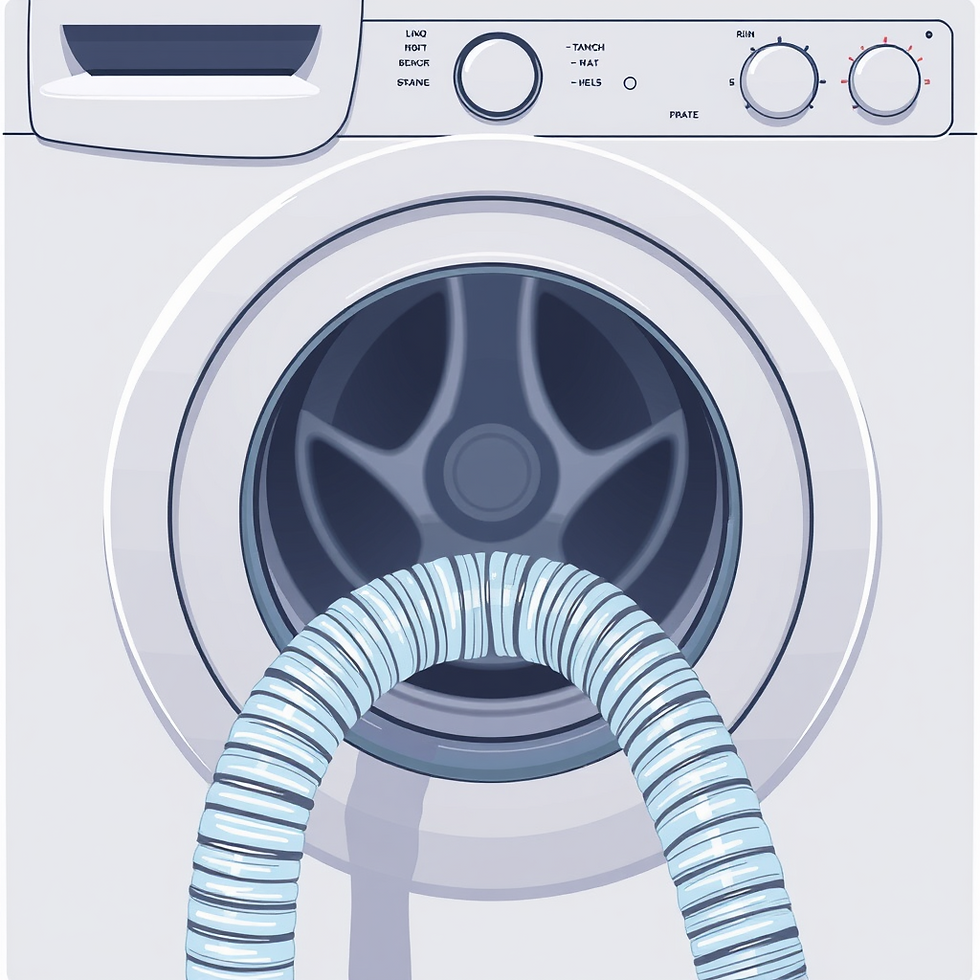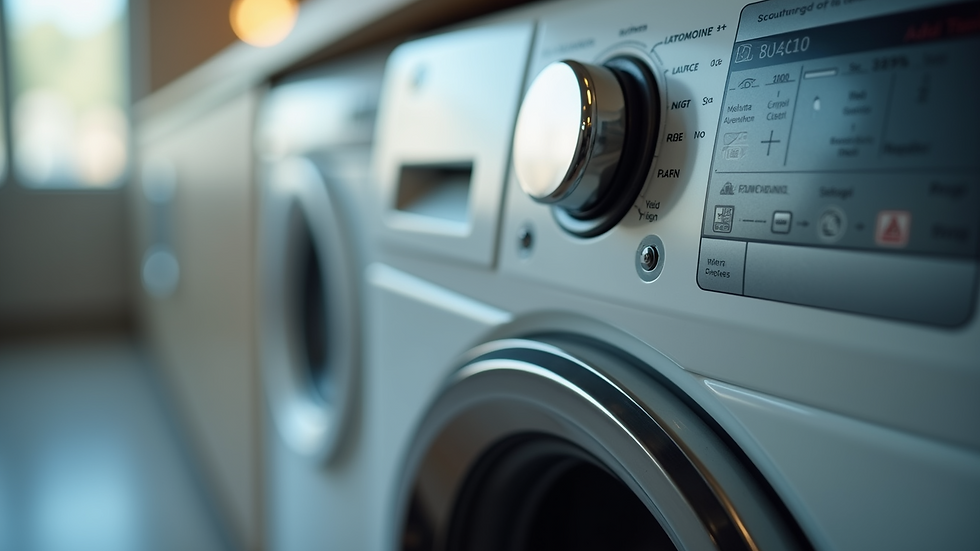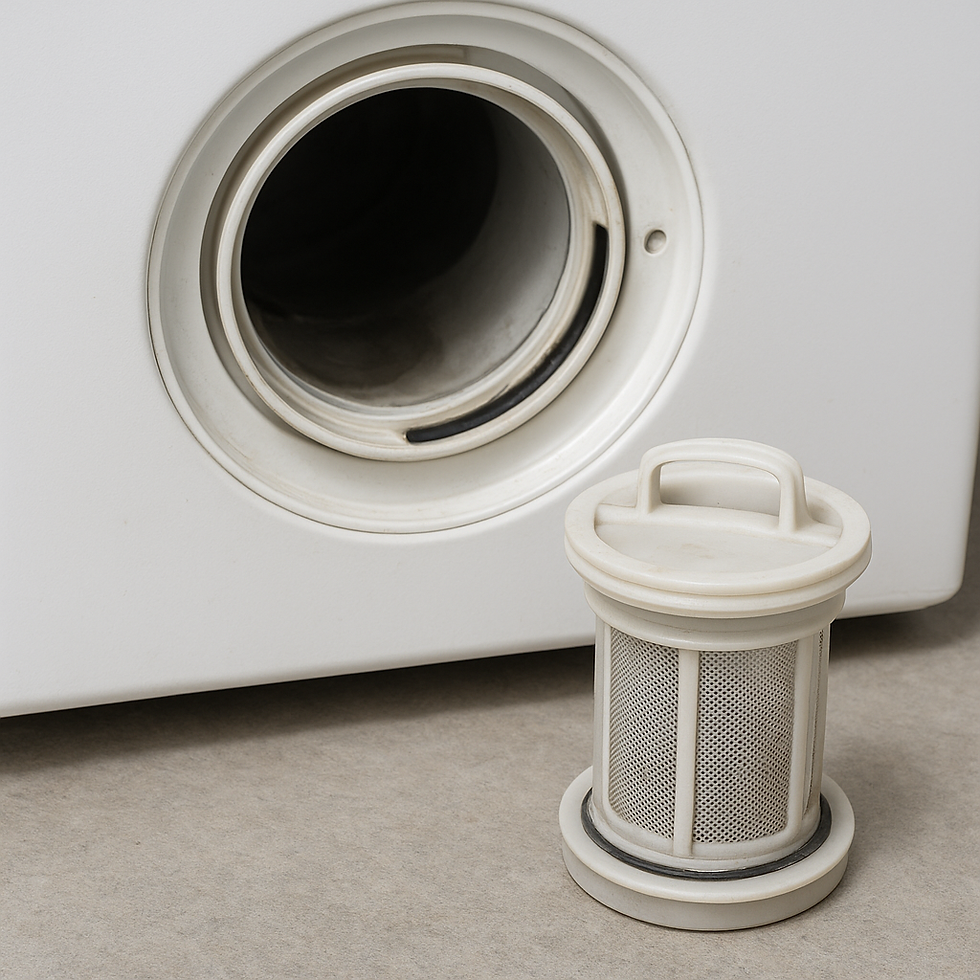
Troubleshooting a Washing Machine That Won’t Drain
- Ronen Itzkovitch
- Aug 27
- 4 min read
A washing machine that fails to drain properly can disrupt daily routines and cause frustration. Understanding the common causes and solutions for this issue is essential for homeowners seeking to maintain their appliances effectively. This article provides a detailed guide on troubleshooting a washing machine that won’t drain, offering practical advice and clear steps to identify and resolve the problem.
Common Causes of Washing Machine Drainage Problems
Several factors can contribute to a washing machine not draining water as expected. Identifying the root cause is the first step toward an effective repair.
Clogged Drain Hose: Over time, debris such as lint, small clothing items, or detergent residue can block the drain hose, preventing water from exiting the machine.
Blocked Pump Filter: Many washing machines have a pump filter designed to catch foreign objects. If this filter becomes clogged, it can restrict water flow.
Faulty Drain Pump: The drain pump is responsible for expelling water. A malfunctioning pump motor or impeller can stop the draining process.
Kinked or Damaged Drain Hose: Physical damage or sharp bends in the hose can obstruct water flow.
Lid Switch Assembly Issues: Some machines will not drain if the lid switch is defective, as a safety feature.
Control Board or Timer Malfunction: Electronic or mechanical control failures can prevent the machine from entering the drain cycle.
Understanding these causes helps in narrowing down the troubleshooting process and deciding whether a simple fix or professional repair is necessary.

Washing Machine Troubleshooting: Step-by-Step Diagnostic Process
A systematic approach to troubleshooting can save time and avoid unnecessary repairs. The following steps outline how to diagnose drainage issues safely and effectively.
Unplug the Washing Machine: Always disconnect power before inspecting or repairing any appliance.
Check the Drain Hose: Inspect the hose for kinks, clogs, or damage. Detach it from the machine and run water through it to ensure it is clear.
Examine the Pump Filter: Locate and clean the pump filter if accessible. Remove any lint, coins, or debris.
Test the Drain Pump: Listen for unusual noises during the drain cycle. A silent or noisy pump may indicate failure.
Inspect the Lid Switch: Use a multimeter to test the lid switch for continuity. Replace if faulty.
Review the Control Settings: Ensure the machine is set to the correct cycle and that the timer advances properly.
Run a Diagnostic Cycle: Some modern machines have built-in diagnostics to identify errors.
If these steps do not resolve the issue, it may be necessary to consult a professional technician.

How do you fix a washing machine that won't drain completely?
Fixing a washing machine that does not drain fully involves addressing the specific component causing the blockage or failure. The following solutions correspond to common problems identified during troubleshooting.
Clearing a Clogged Drain Hose: Remove the hose and flush it with water or use a flexible brush to dislodge blockages.
Cleaning the Pump Filter: Open the filter compartment, usually located near the bottom front of the machine, and remove debris carefully.
Replacing a Faulty Drain Pump: If the pump motor or impeller is damaged, replacement is often the most effective solution.
Straightening or Replacing the Drain Hose: Ensure the hose is free of kinks and replace it if damaged.
Repairing or Replacing the Lid Switch: A defective lid switch can be replaced with a compatible part to restore proper function.
Resetting or Repairing the Control Board: In cases of electronic failure, resetting the machine or replacing the control board may be necessary.
Each repair should be performed with attention to safety and manufacturer guidelines. When in doubt, professional assistance is recommended.

When to Seek Professional Washing Machine Repair Services
While some drainage issues can be resolved with basic maintenance, others require specialized knowledge and tools. Professional repair services offer several advantages:
Accurate Diagnosis: Technicians can quickly identify complex problems using diagnostic equipment.
Proper Replacement Parts: Professionals have access to manufacturer-approved components.
Safety Assurance: Repairs involving electrical or mechanical components are performed safely.
Time and Cost Efficiency: Avoiding trial-and-error repairs can save money and prevent further damage.
For homeowners experiencing persistent issues with a washing machine not draining, contacting a trusted appliance repair company ensures reliable and prompt service.
Maintaining Washing Machine Drainage Performance
Preventive maintenance can reduce the likelihood of drainage problems and extend the lifespan of the appliance. Recommended practices include:
Regularly Cleaning the Pump Filter: Schedule cleaning every few months to prevent buildup.
Using Appropriate Detergents: Excessive detergent can cause residue that clogs hoses and filters.
Avoiding Overloading: Overloading the machine can strain the pump and drainage system.
Inspecting Hoses Periodically: Check for signs of wear or damage and replace as needed.
Running Maintenance Cycles: Some machines have self-cleaning cycles to clear internal components.
Implementing these measures helps maintain optimal washing machine function and reduces the need for repairs.
This guide provides a comprehensive overview of troubleshooting and resolving washing machine drainage issues. By following the outlined steps and recommendations, homeowners can address common problems effectively or seek professional assistance when necessary. Reliable appliance performance contributes to a well-managed household and prevents inconvenience caused by a washing machine that won’t drain.







Comments